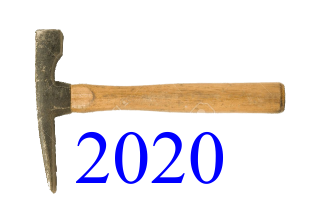Harold Kuehn

PhD
Ph. D. Thesis
ALONG-TRENCH SEGMENTATION AND DOWN-DIP LIMIT OF THE SEISMOGENIC ZONE AT THE EASTERN ALASKA-ALEUTIAN SUBDUCTION ZONE
(PDF - 180 Mb)
The largest and most destructive earthquakes nucleate on the seismogenic parts of megathrust faults along subduction zones. Understanding the controls of rupture propagation in along-trench and dip direction is a key factor to estimate size and location of future megathrust earthquakes. Various geologic features and subduction-related processes have been proposed to affect megathrust segmentation along the plate boundary zone, however, inaccessibility due to its deep location makes a detailed investigation challenging. The ALEUT project aims to overcome these difficulties by acquisition of state-of-the-art deep penetrating multichannel seismic reflection data combined with coinciding ocean bottom seismometer refraction data for a large section of the eastern Alaska-Aleutian subduction zone (AASZ). This thesis discusses results based on the ALEUT dataset and provides unique insights into possible morphological controls on along-strike rupture organization of the subduction thrust and new constraints on its seismogenic down-dip limit. Plate interface reflections recorded throughout the survey area were used to construct a 3D model of the interplate interface, on which two major crest-like have been identified. The spatial coincidence of these geometrical highs, interpreted to represent subducted seamounts chains, with boundaries of the region’s great earthquake ruptures indicates that the megathrust geometry is the primary factor controlling the segmentation of the eastern AASZ. Furthermore, the plate interface reflection signatures appear to increase significantly with depth and have been correlated to 1) seismogenic, 2) conditionally stable and, 3) aseismic slip behavior. The results confirm the spatial extent of rupture areas derived from existing information, such as aftershock locations, inverse tsunami waveform modelling and the intersection of a serpentinized mantle wedge. However, contrary to recent geodetic dislocation models that suggest a widely free slipping segment along the ASSZ (Shumagin Gap), the results suggest a seismogenic plate interface for this area that extents from the trench up to 100 km landward. A partially seismogenic Shumagin Gap area could become part of a great future megathrust event as shallow rupture is propagating into this area and exposing it to strong ground shaking and large tsunami waves, as it might have happened in the 18th and 19th century.
Keywords: Grenville, Gneiss, Monazite, U-Th-Pb Dating, Electron Microprobe
Pages: 334
Supervisor: Mladen Nedimović



